I have put up some scans from this double issue before - Cinefantastique 1987, with a focus on "Star Trek: The Movie Trilogy" (referring to The Wrath of Khan, The Search for Spock, and The Voyage Home). I love this issue, as it is practically taken over by interviews and articles on my favorite subject.
After directing "The Search for Spock", Leonard Nimoy was fortunate (and talented) enough to direct his second Star Trek movie - this time being one of the stars, as well.
This article also has fantastic pictures of the cast and directors behind the scenes. (Right click and open in new tab or window to see full size)
After the seriousness of the first movie and the deaths in the second and third, they wanted this "new" movie to be "lighter in tone". Bring back time travel seemed like a must, and they had even considered having the crew go back to prehistoric times or the 1890s. Nimoy finally decided on 1986, because it "seemed to provide the greatest opportunities for fun".
Nimoy's plan: not a chase or malfunction, but "what if there's a problem in the 23rd century and the solution lies in the twentieth century?" After considering ideas such as medical problems that could only be cured by an extinct plant from the twentieth century (ideas that were filled with death and disease), the right one came almost be accident.
"I was talking to a friend of mine about endangered species and up came the subject of the hump back whales and the mysterious songs they sing. We don't know exactly what it is or what it means. I thought, 'that's it!' If we can pull that off, sending humpback whales 300 years through space, that would be exciting. And that's how the story evolved."
The Voyage Home is different in many ways - it is more comedic, and the most violent acts in the entire movie are a Vulcan nerve pinch on the bus and a slap in the face. There is just so much that makes it great - for any age.
"Our show is enduring because the kids can watch the show for the action and adventure and the fun and the aliens and the spaceships. Then you can revisit out shows six to eighteen years later and discern something that you were not aware of." This is true of every Star Trek episode and movie.
The Voyage Home (or "The One With the Whales" as many know it) has a very strong ecological message, Which reflects Nimoy's concerns (as a contributor to Greenpeace) but was not entirely intentional:
"I'm not a heavy contributor, but I get their newsletters and things. The idea of putting the spaceship between the whaling ship and the whale and being hit by the harpoon obviously has Greenpeace origins because that's what Greenpeace used to do to attract attention to the Save the Whale Campaign. They went out on rubber rafts in front of Russian ships to prevent them from firing their harpoons. That has always remained in my mind and that's where the idea came from. I didn't set out to do a film about ecology. You can say I'm concerned. But the idea of the Whales came because it seemed like a useful and romantic device. If we're helping the whales to get along better in the world, that's great."
To anyone who has never seen this movie, or even if it has been more than a year since you last saw it, I strongly recommend that you watch it again. It is, by far, my favorite Star Trek movie.
Dif-tor heh smusma!


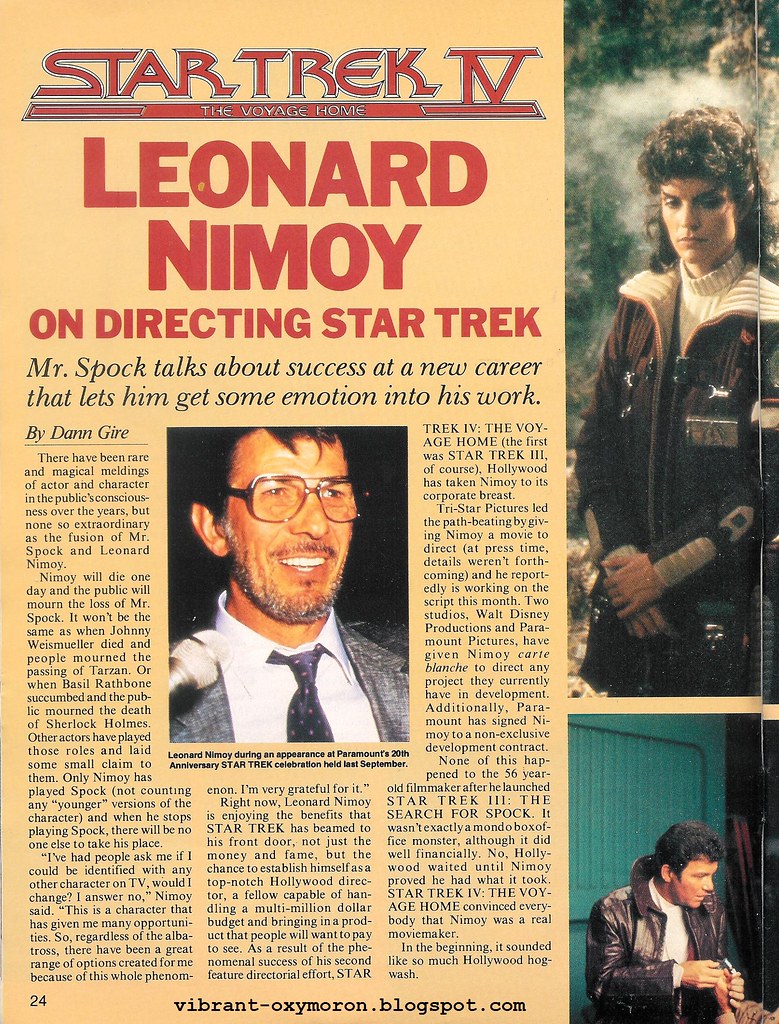
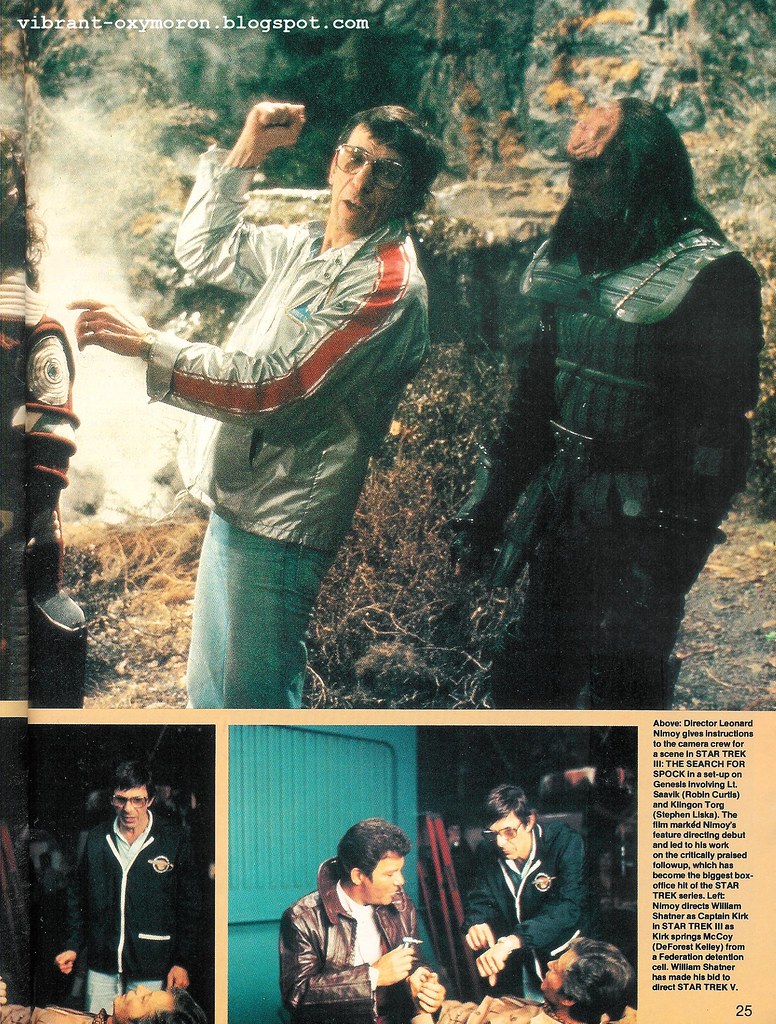
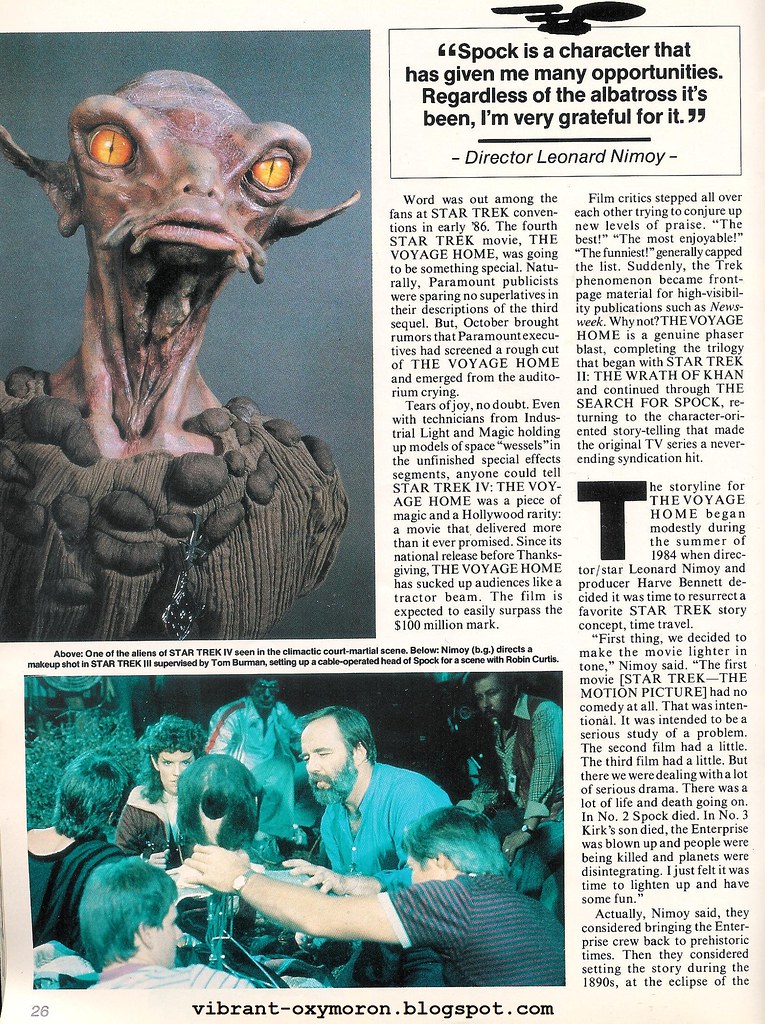
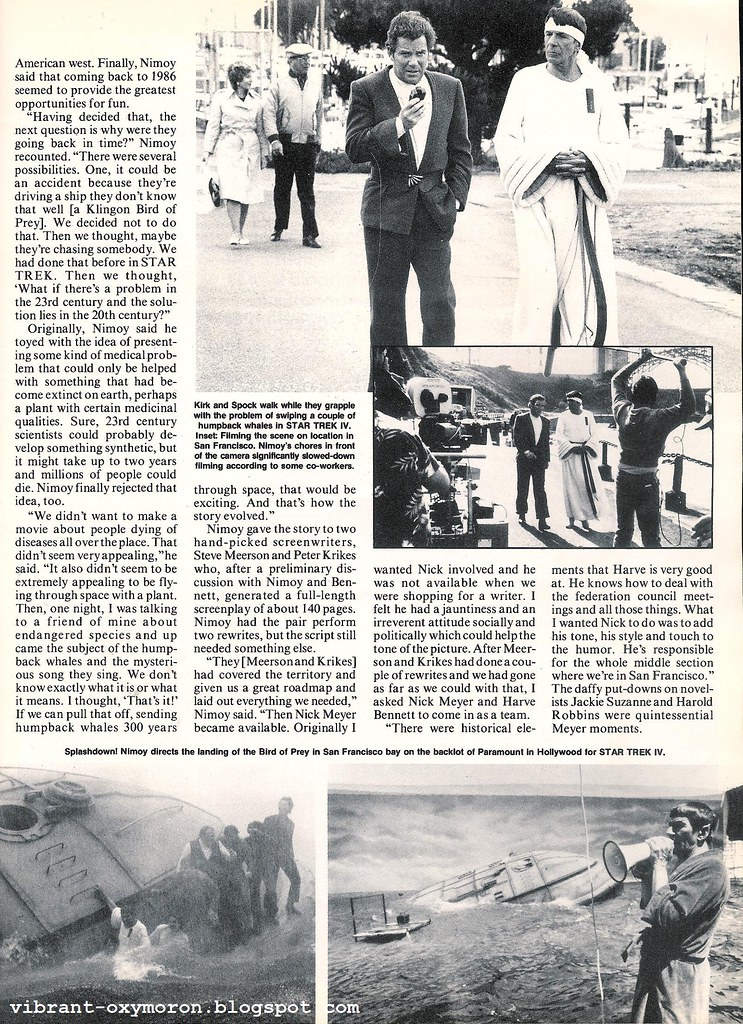
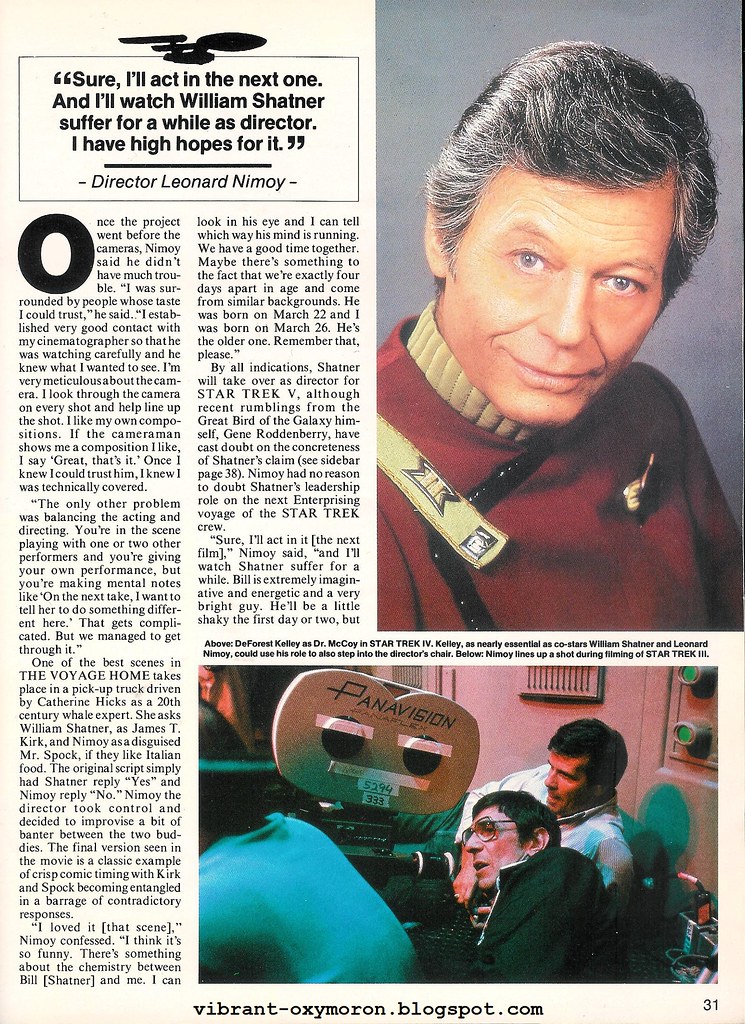

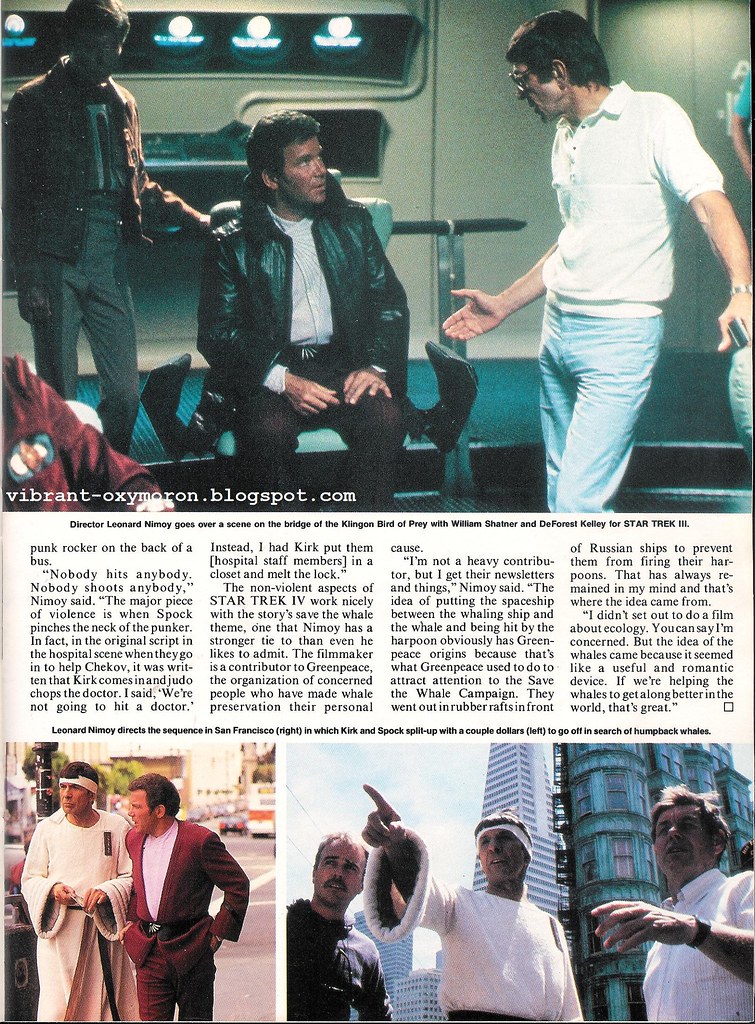
thanks for sharing this material :)
ReplyDeleteThank you so much for sharing it. I wish Kelley too had directed an ST movie.
ReplyDeleteyeezy
ReplyDeletejordans
supreme clothing
supreme clothing
moncler jackets
supreme clothing
yeezy boost 350
balenciaga speed
yeezy boost 350
off white nike